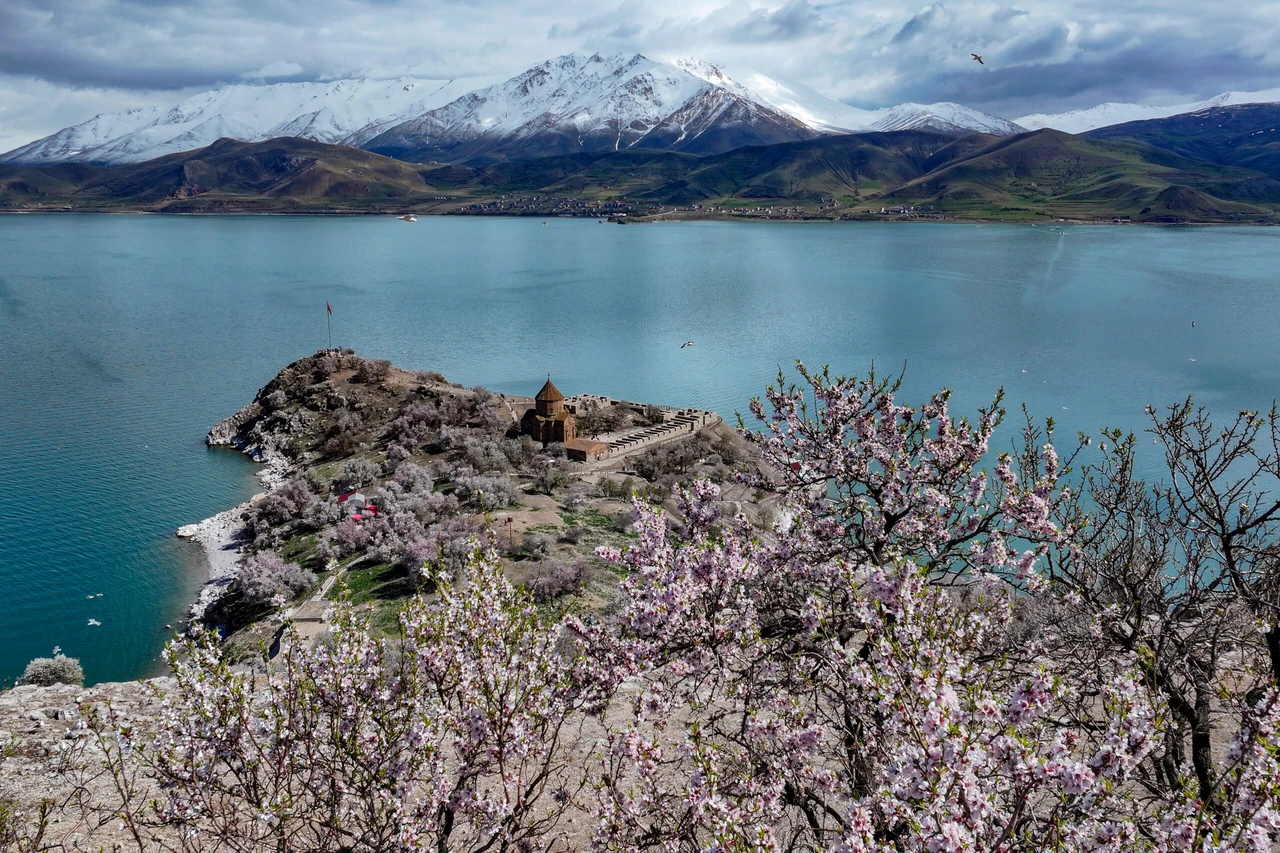How do sinkholes threaten Turkish farmers’ livelihoods in Konya?
 This aerial photograph shows a view of a sinkhole formed in a field in Karapinar, Konya province, Türkiye, June 24, 2024. (AFP Photo)
This aerial photograph shows a view of a sinkhole formed in a field in Karapinar, Konya province, Türkiye, June 24, 2024. (AFP Photo)
The Karapinar district in Konya, a central Anatolian province of Türkiye, faces a growing number of sinkholes, causing significant concern among local farmers and residents.
This problem has intensified because of prolonged droughts and excessive groundwater use for irrigation.
Understanding growing problem of sinkholes
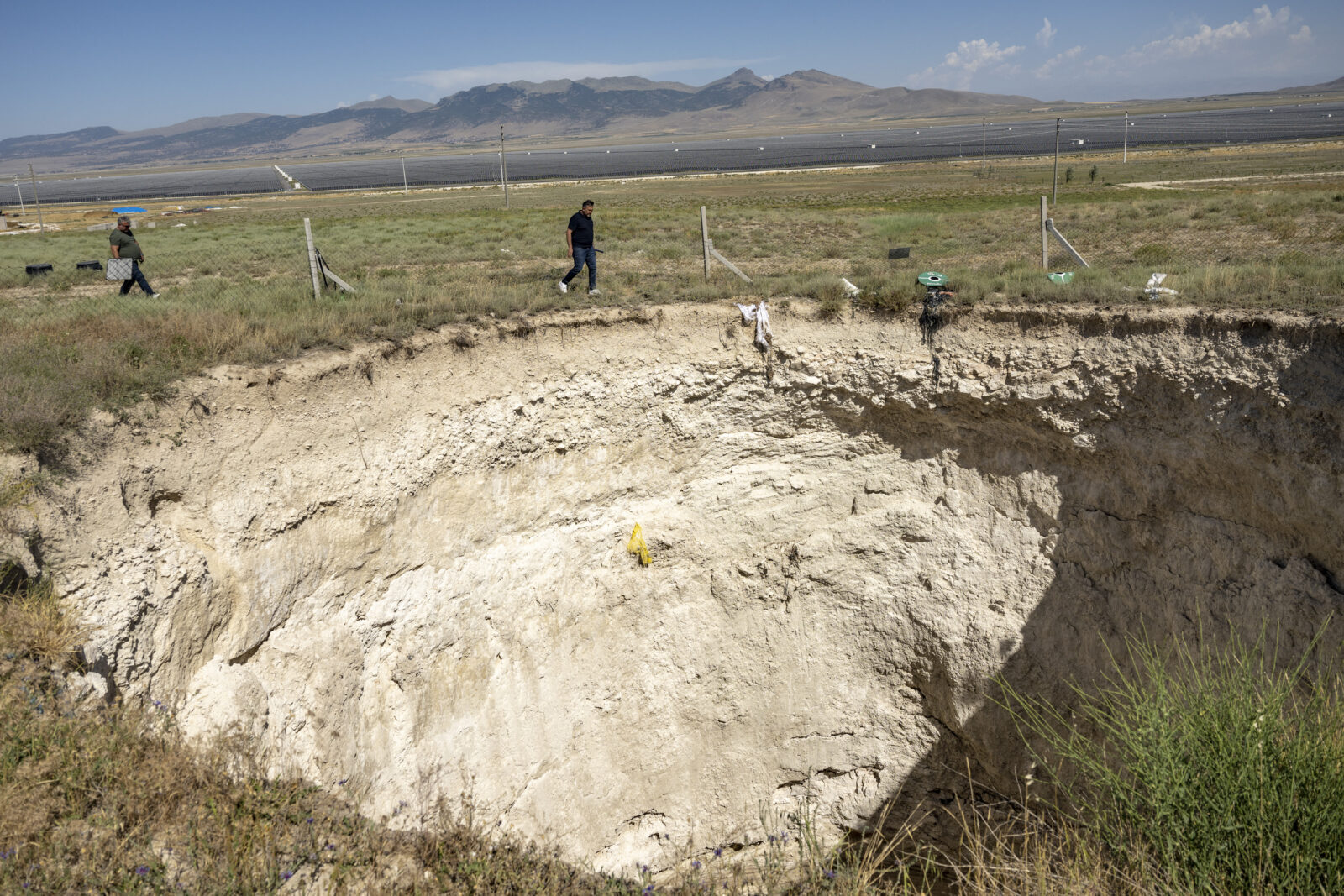
Sinkholes form when groundwater dissolves the bedrock, creating cavities that eventually collapse. This process occurs naturally over time but accelerates because of human activities like excessive groundwater extraction.
When the support for the ground above these cavities diminishes, the land collapses into the void, creating a sinkhole. These can vary in size from a few feet (meters) to over 160 feet (50 meters) in both depth and width.
Threat posed by sinkholes in Konya
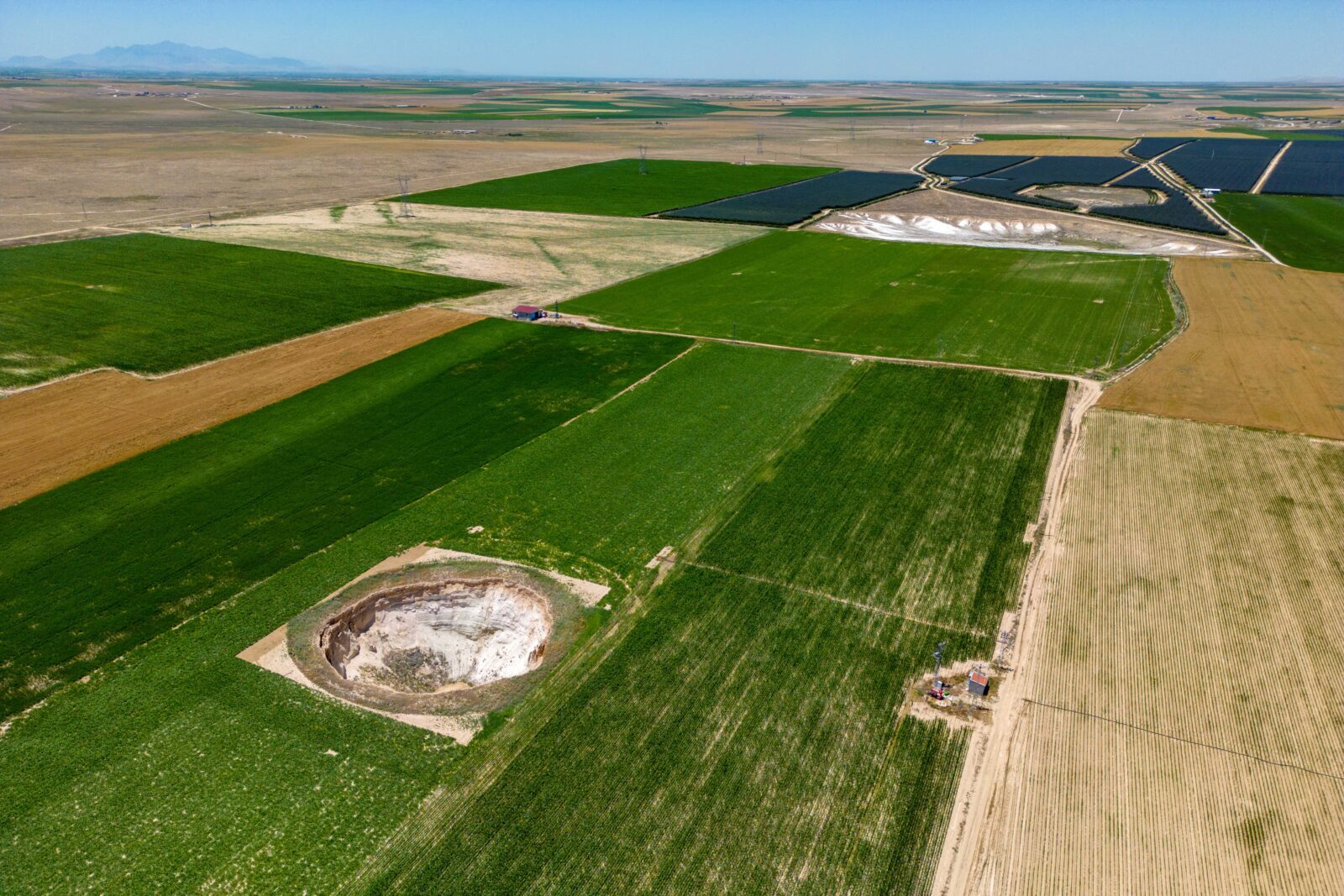
Fatih Sik, a farmer in Karapinar, confronts the peril every day as he works his fields. “Anywhere could sink, I keep thinking. And I know I’d be dead at the bottom,” he shared with Agence France-Press (AFP), reflecting the pervasive anxiety among the farming community. Two large sinkholes have already emerged on his land, exacerbating the risk to his livelihood.
Sinkholes, some as deep as 164 feet (50 meters), have been part of the landscape for centuries but their frequency has surged. Konya is an agricultural province known as Türkiye’s breadbasket and has been particularly affected by this phenomenon.
Arif Delikan, an associate professor at Konya Technical University, noted: “Around 20 holes have emerged over the past year in Karapinar,” attributing this to both natural and human-induced causes. Delikan and his team have identified 640 sinkholes in the region, with over 600 in Karapinar alone.
Causes, consequences of sinkholes in Türkiye
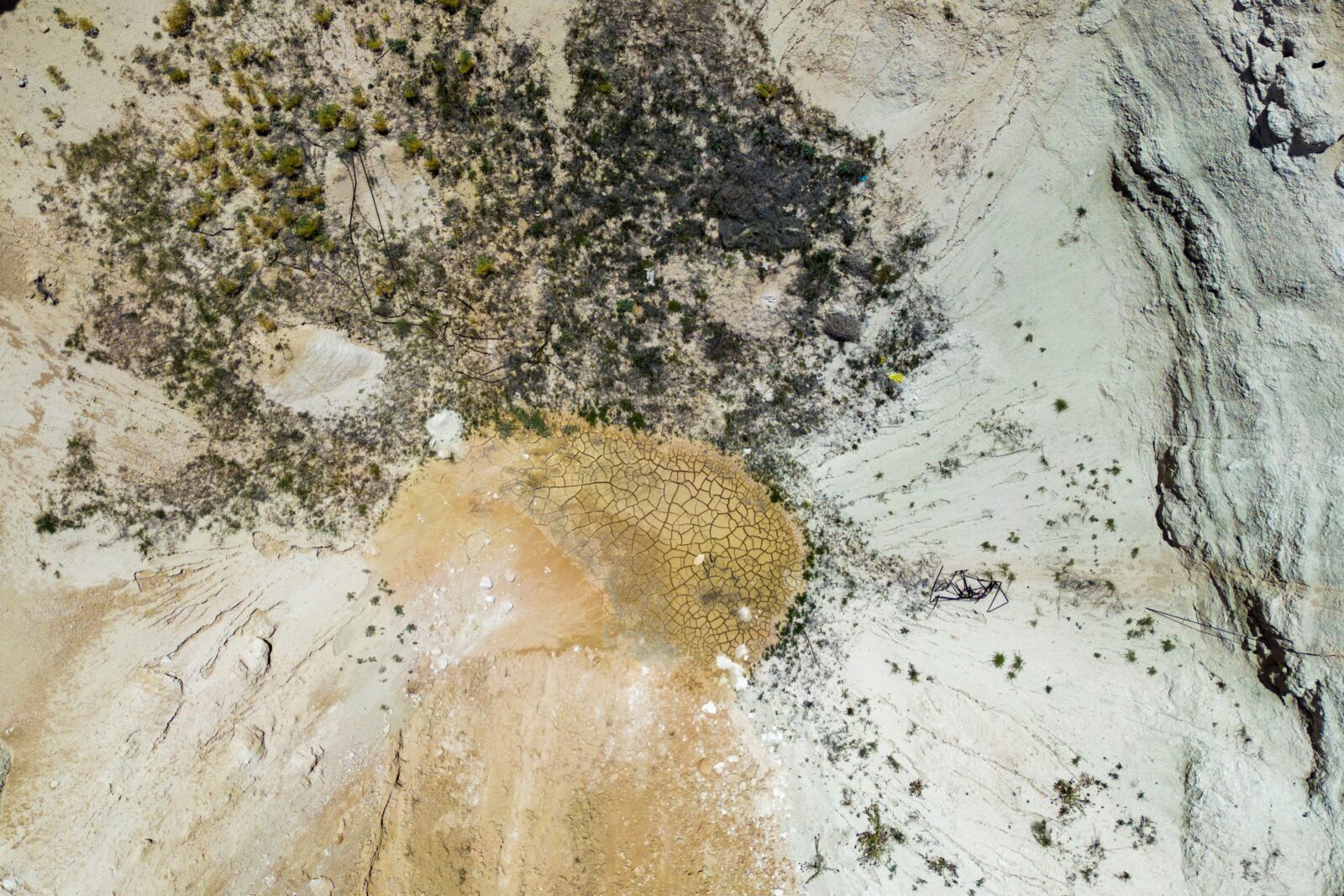
Climate change and extensive groundwater extraction drive the increasing sinkholes. Delikan points out that the water level in Karapinar drops by 33 to 66 feet (10 to 20 meters) annually because of the overuse of wells for irrigation. The situation worsens with the cultivation of water-intensive crops like corn and beetroot.
Prolonged droughts have lowered the subterranean water levels, increasing the chance of these collapses. The Disaster and Emergency Management Agency (AFAD) and Konya Technical University have mapped over 2,700 surface deformations and non-seismic fractures indicating sinkhole risks. This year’s rainfall in Konya was 40% below average, further stressing the groundwater resources.
Impact of sinkholes on Turkish farmers, residents

The local community faces profound impacts. In 2023, Adem Ekmekci, a farmer, witnessed a sinkhole swallow several trees on his farm. “When I came back, the soil had collapsed and several trees had fallen in. It was really scary,” he told Agence France-Presse (AFP).
Despite the danger, Ekmekci and many others have no choice but to continue living and working in the area.
Illegal wells worsen the problem. Farmer Yigit Aksel admits, “There are tough days ahead,” recognizing that irrigation practices contribute to the issue. Over the winter, rainfall in Konya was 40% below average, further stressing the groundwater resources.
Historical context: Sinkholes in Türkiye over years
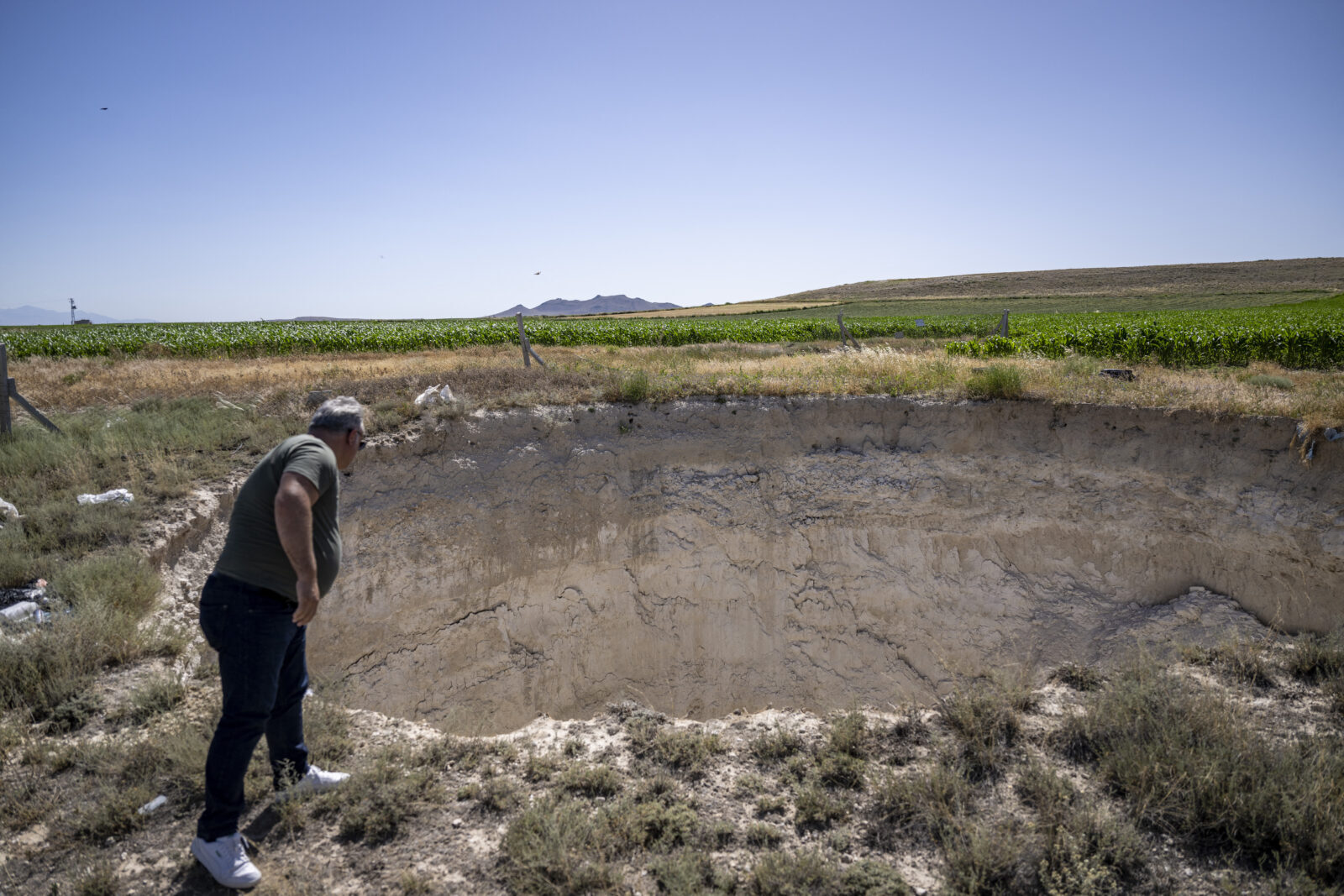
The frequency of sinkholes has dramatically increased over the years. Data from the early 2000s shows only a few sinkholes per year, but recent years have seen dozens annually. In 2020, experts recorded 43 sinkholes in the region, and by 2024, this number continues to rise.
Professor Fetullah Arik, director of the Sinkhole Application Research Center at Konya Technical University, highlights the escalating issue: “The number of sinkholes has gradually increased in recent years. The primary cause is climate change and drought.”
Arik warns that the Karapinar district is predominantly affected, with some sinkholes reaching depths of over 130 feet and widths of 164 feet.
Historical data from Konya shows that from the 1920s to the early 2000s, only about 95 sinkholes were recorded. However, the number surged to 43 in 2020 alone. By 2022, the total had exceeded 2,600, demonstrating the rapid acceleration of this geological problem.
Global comparisons: Sinkholes around world
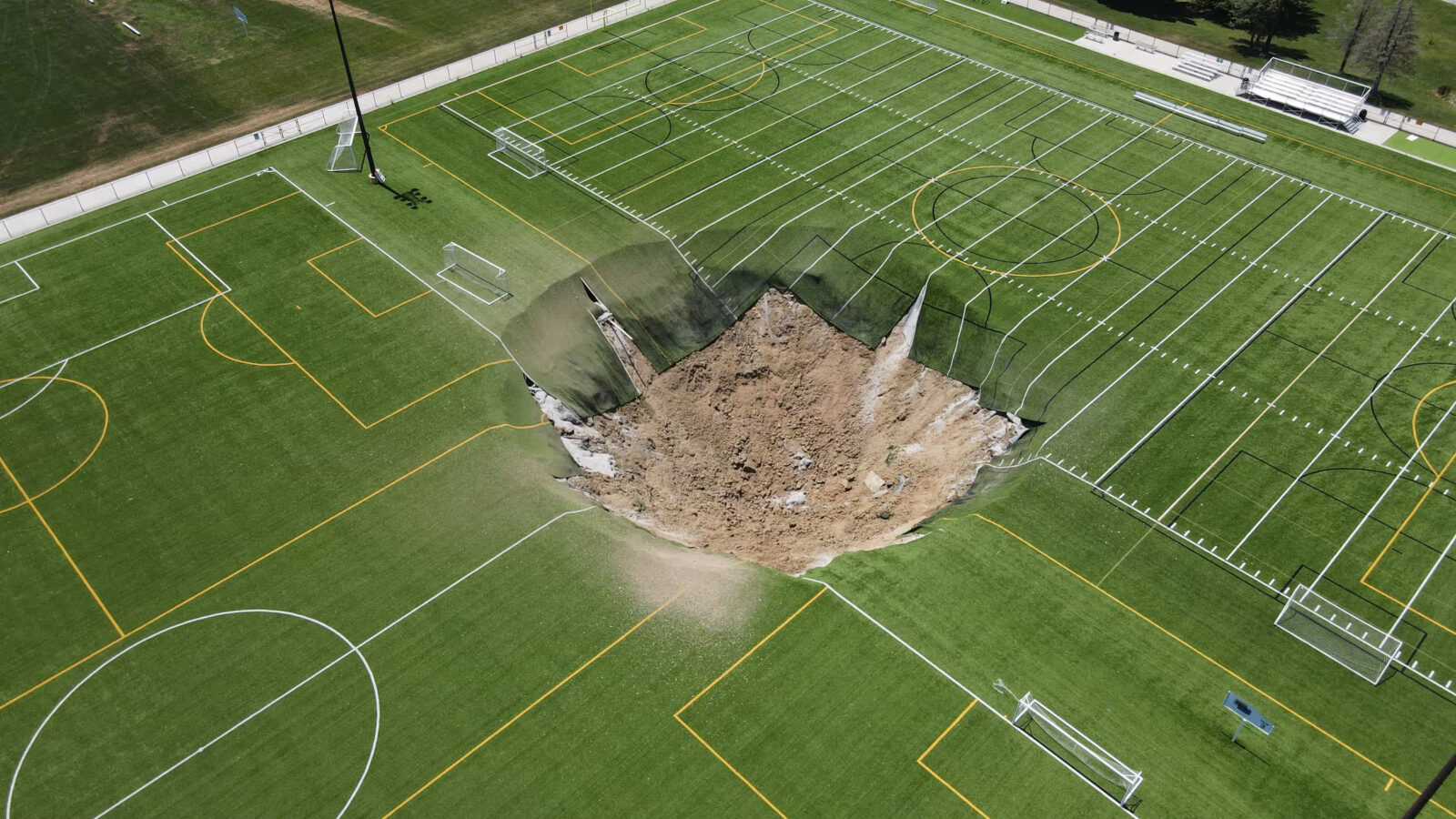
The situation in Konya reflects a global pattern where sinkholes become more common because of similar factors. For instance, a recent sinkhole in Illinois, U.S., formed in the middle of a soccer field, highlighting the global nature of this geological problem.
Local authorities attributed this to the collapse of an underground mine, a scenario akin to the groundwater depletion in Konya. In another incident, 16 sinkholes appeared simultaneously in Konya’s Cumra district, emphasizing the severity of the situation.
Efforts to address sinkhole crisis
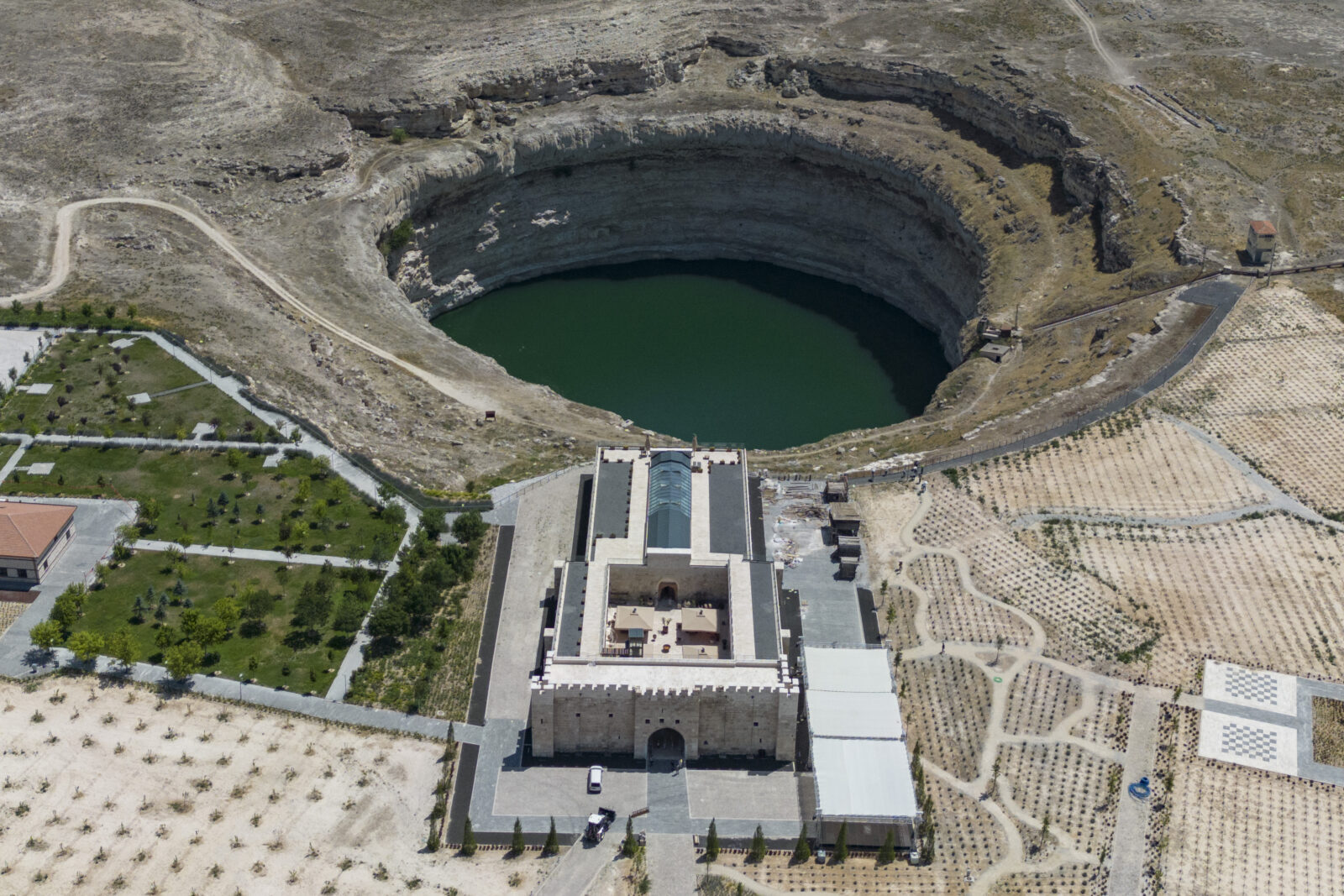
Efforts to address the crisis include identifying and mapping sinkhole risks. Experts like Delikan emphasize the need for controlled groundwater used to prevent future sinkhole formation.
Despite some efforts to turn this crisis into an opportunity, such as transforming sinkholes into tourist attractions, the overall outlook remains grim without significant changes in water management practices.
Some entrepreneurs have sought to leverage the sinkhole crisis for tourism. Cem Kinay, for instance, opened a luxury 13-room hotel inside an 800-year-old Seljuk caravanserai near Türkiye’s oldest and most famous sinkhole called Obruk Caravanserai Museum Hotel. “We need to turn these fears into something positive,” Kinay said, reflecting a minority view that sees potential amid the crisis.
Human toll of sinkholes
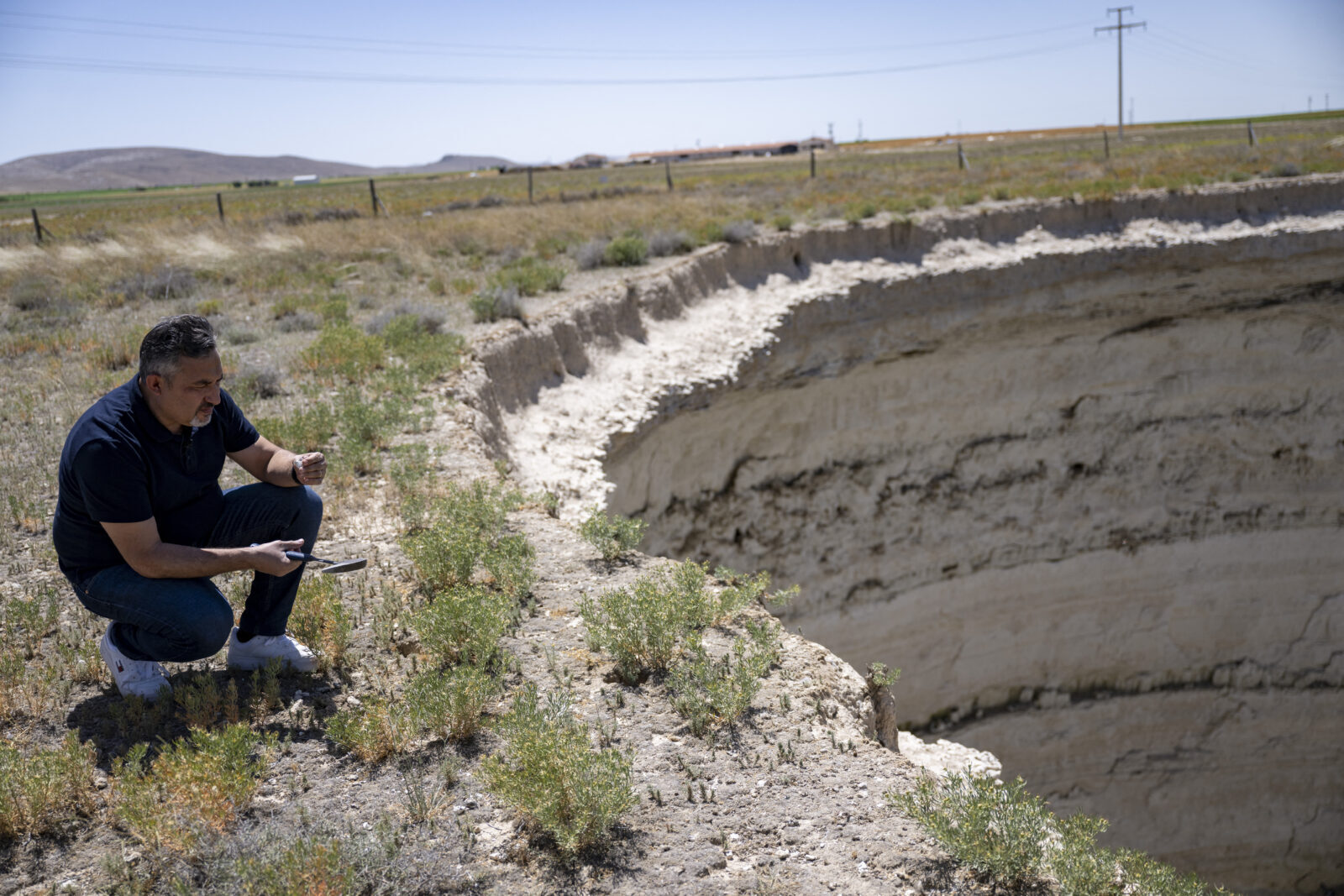
Farmers and residents live in constant fear. Grazing his sheep, a 27-year-old Afghan shepherd named Omer expressed his concerns, “God forbid, if one falls in, the others will follow.”
These fears are not unfounded, as sinkholes can appear without warning, swallowing land and any structures or livestock in their path.
The local disaster agency, Disaster and Emergency Management Authority (AFAD), has implemented measures to monitor and mitigate risks. They have identified over 2,700 deformations and non-seismic fractures in the region, signaling areas at risk of future sinkholes. However, the rapid rate of sinkhole formation poses a significant challenge to these efforts.
